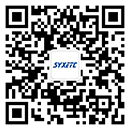How to measure the ripple of a power module
1. The oscilloscope bandwidth is required to be 20MHz (most mid- to low-end oscilloscopes are limited to 20MHz, and good products also have 200MHz bandwidth control options). The purpose is to prevent high-frequency noise of digital circuits from affecting ripple measurements and ensure the accuracy of measurements as much as possible. ;
2. Set the coupling method to AC coupling for convenient measurement (use a smaller gear to carefully observe the ripple, and do not pay attention to the AC level);
3. Make sure the camera grounding device is as short as possible (the main reason why the measurement ripple often reaches hundreds of mV is that the wire connector is too long), and try to use the original short detection pin built into the probe. If you are testing a short needle, you can disassemble the wire connector and shell of the probe, expose the camera shell, and wrap your own ground wire around the probe shell to ensure that the length of the wire connector is less than 1cm;
4. The ground of the oscilloscope is suspended, and the ground of the probe is only shared with the reference point of the detection signal. It is not necessary to share the ground with the test bench through other methods (this will introduce greater ground noise into the ripple measurement). For example: when the oscilloscope and other instruments share the same plug-in board, the power switch of other instruments may generate noise interference signals for testing through the ground wire.
The ground of the oscilloscope is suspended, and the ground of the probe is only shared with the reference point of the detection signal, and does not need to be grounded with the test bench through other methods (this will introduce greater ground noise into the ripple measurement). For example: when the oscilloscope and other instruments share the same plug-in board, the power switch of other instruments may generate noise interference signals for testing through the ground wire.
 Chinese
Chinese ENGLISH
ENGLISH


